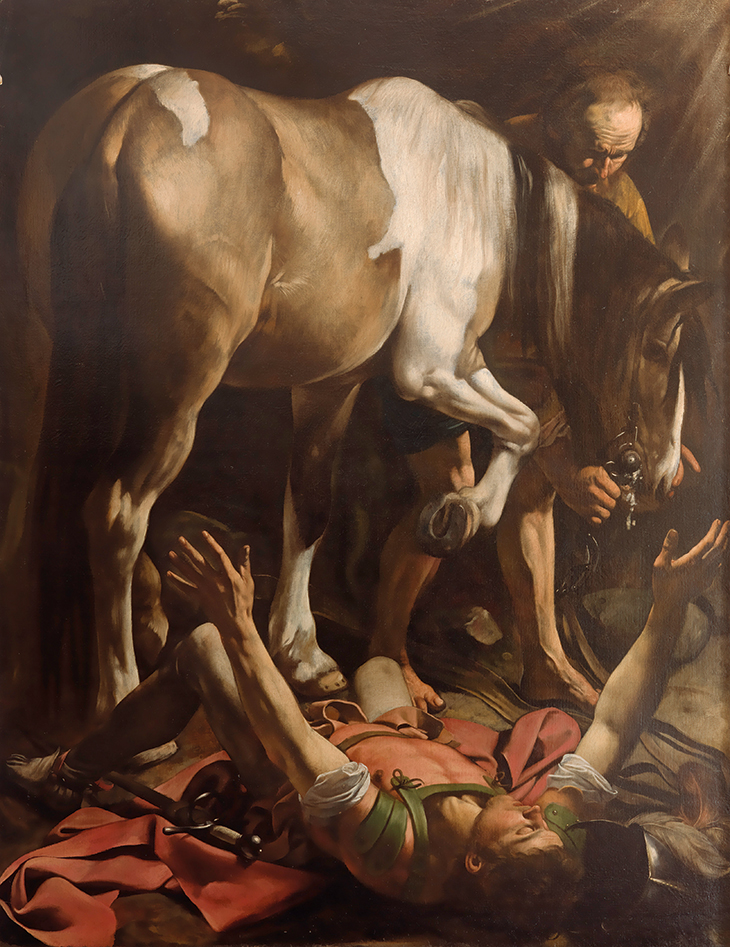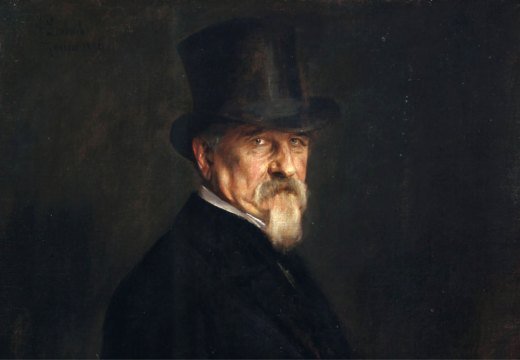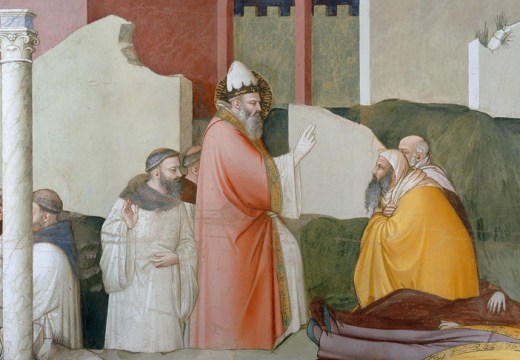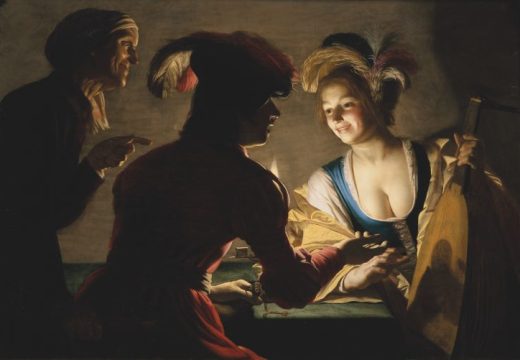This review of Bravura: Virtuosity and Ambition in Early Modern European Painting by Nicola Suthor (Princeton University Press) appeared in the June 2021 issue of Apollo. Preview and subscribe here.
Nicola Suthor’s Bravura: Virtuosity and Ambition in Early Modern European Painting is a dynamic account of how painting and the notion of the artist were transformed in European art in the later 16th and 17th centuries. The book is a ‘heavily revised and supplemented’ version of her monograph Bravura: Virtuosität und Mutwilligkeit in der Malerei der frühen Neuzeit (2010), which has been translated from the German by Lisa Lawrence. Both versions treat bravura as a descriptor of pictorial style, painterly technique and artistic character that is dramatic, self-regarding and bombastic to the point of aggression.
The expanded, English book situates bravura more squarely than did the German version in the process of the evolution of oil painting from a neutral, even self-effacing medium serving the imitation of nature to one of self-conscious ostentation, which served the artist as much as their subject matter. Where previously, Suthor argues, artists had concealed themselves and the socially inferior mechanics of their craft behind smooth, layered glazes of oil, from around the middle of the 16th century artists began to draw attention to themselves through obvious facture. With the flourish and precision of a duellist, the bold painter wielded their brush like a sword, dashing the canvas with luscious, virtuosic sweeps of impastoed paint that stand proud of the surface, just as the painter now stood proudly in the public sphere as a fully embodied creative force. With braggadocio, painters proposed themselves as rivals not only to the writers and musicians with whom they competed viciously in courts and cities, but also to nature’s maker, God. This ambition was manifested in a spectacular style that emphasised effortless quickness and which was complemented by feats of compositional daring, whether complex (such as the challenging foreshortening of multi-figural scenes in painted domes) or simple (like the radical absences of Caravaggio, as in his Conversion of Saint Paul (1600–01). Hitherto, artists had aspired to courtly elegance in their conduct, yet this was increasingly replaced by roguish posturing: the swagger of style spilling out on to the streets in outlandish, sometimes even criminal behaviour. Where earlier artists – Raphael, Michelangelo & co. – stressed the pre-eminence of design and the spiritual potency of the divinely inspired intellect from which it sprang, their successors – from Titian to Fragonard – revelled in manual performance and the materiality of pigments and bodies.

Conversion of Saint Paul (1600–01), Michelangelo Merisi da Caravaggio. Cerasi Chapel, Santa Maria del Popolo, Rome. Photo: akg-images/Mondadori Portfolio/Mauro Magliani
If this all sounds rather similar to traditional stories about the evolution of the Renaissance into the baroque, that’s because it is. Suthor’s tale is not a new one, indeed the prominence of figures familiar from the story of painting’s social and stylistic loosening – Titian, Tintoretto, Caravaggio, Rubens, Velázquez – makes this plain. Yet Suthor invigorates this subject in myriad ways, not least by the sheer verve of her writing and the ambition of her project. The book is itself a bravura performance, galloping through several centuries of European art history with considerable wit and erudition. We are treated to insightful interpretations of many major (and some overlooked) artists and works and where, by dint of the sheer range of her venture, Suthor has been obliged to draw on the substantial secondary literature, she is generous in crediting her fellow scholars. The real value of this book, though, lies in Suthor’s inspired decision to home in on bravura itself as an organising principle through which to comprehend the intricate relationship between painting and personality. At its heart this is really a book about style and how we should study and write about it, to which end Suthor has adopted a two-pronged approach: by looking at ‘visual strategies’ through the lens of writings about art and, conversely, by exploring how paintings can ‘elucidate rhetorical terms of art criticism’. The former is undergirded by a careful examination of the semantics of bravura and by the author’s immersion in early modern art theory. The latter is predicated on close looking and a phenomenologically inspired concern for process as much as for product, which is then turned back towards critical writings by the likes of Bellori, Von Sandrart, and De Piles.
Here, to use a geological metaphor of the kind favoured by phenomenologists such as Merleau-Ponty, we encounter one of the several fault lines in Suthor’s book. She seems unwilling to commit to any given tack in approaching the relationship between words and images (or indeed images and ideas), such that it is unclear whether she is a committed phenomenologist or a more conventional historical contextualist. Perhaps it doesn’t matter, since her readings of specific paintings are both lyrical and persuasive. Indeed, at the level of the case study the book is dazzling: readers will be delighted and informed by Suthor’s dexterous weaving of anecdote and ekphrasis to conjure and explain the bravura that is her subject. Yet the dizzying variety and volume of her cases present challenges when it comes to the bigger picture. Surely Rubens, the peaceable paradigm of Neostoic decorum (represented here by his pathos-filled The Fall of Phaeton of c. 1604–05), is a far cry from the thuggery of a Ribera or the stravaganze of a Caravaggio? In fact, so diverse and so different are the painters and pictures Suthor treats that her apt description of Il Mastelletta’s ambiguous Genre Scene (Festa Campestra) of c. 1602–04 could stand for the book itself: ‘It remains unclear what brings all of these different episodes and people together, other than the general picturesque aspect they all share.’ Nevertheless, the combination of Suthor’s sharp instincts and prodigious learning ensure that Bravura is more than the sum of its parts. This is a book so stuffed full of original and provocative interpretations that we will be debating its claims, big and small, for years to come. For while there are some curious omissions (Watteau, for example) and emphases (as the index reveals, intelligenza but no ingegno; facilità but no fantasia), Suthor has brilliantly clarified the confused welter of bravura’s blotches and splodges into something eminently readable: a shining example of art-historical virtuosity.
Bravura: Virtuosity and Ambition in Early Modern European Painting by Nicola Suthor is published by Princeton University Press.
From the June 2021 issue of Apollo. Preview and subscribe here.
Unlimited access from just $16 every 3 months
Subscribe to get unlimited and exclusive access to the top art stories, interviews and exhibition reviews.














![Masterpiece [Re]discovery 2022. Photo: Ben Fisher Photography, courtesy of Masterpiece London](http://www.apollo-magazine.com/wp-content/uploads/2022/07/MPL2022_4263.jpg)
Why are fathers so absent from art history?